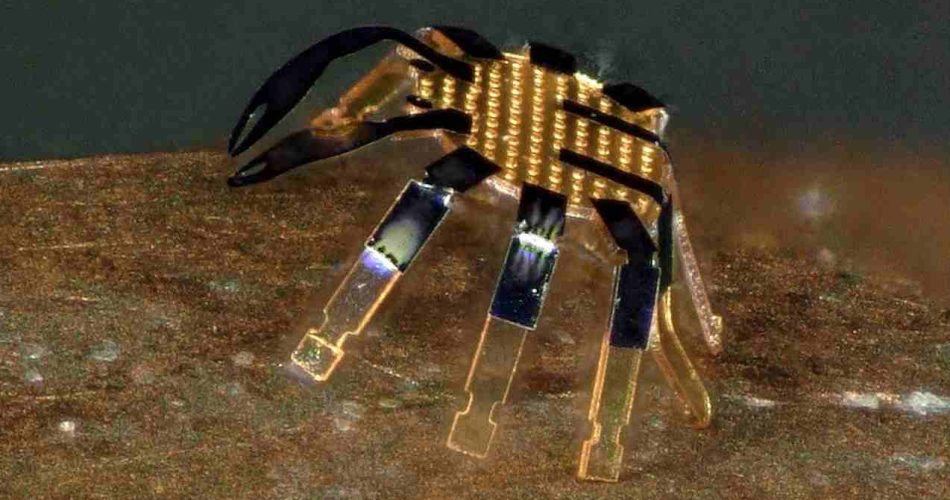Remote-controlled robots as small as a flea
Although it doesn’t look like it, the nanotechnology field is developing quickly as well as robotics. At Northwestern University, engineers developed tiny walking robots that look like crabs and they are the smallest remote-controlled robots ever built. Even though we can’t talk about nanotechnology in this case, because they are millimeter-sized, they can be used for similar activities such as: moving throughout tiny spaces and repairing tasks.

As reported, these robots are one-half-millimeter sized and were first revealed in the Science Robotics journal. Besides walking, they can crawl, twist, bend, turn and also jump.
John Rogers, a bioelectronics scientist who led the work, said that micro-robots can repair or assemble machines but can also be useful for surgery since they can clear clogged arteries, stop internal bleeding or eliminate cancerous tumors without invasive procedures.
They are made of super-thin silicon and elastic material so that they can change their shape when heated by a laser beam. And when they cool instead, the material returns to its original state making them move. This is how the motion effect is achieved. They can reach an average speed of half their body length per second due to their tiny dimensions.
The crab robots were created using a technique that mimics children’s pop-up books. They start from a flat surface which is 2D, then they release tension that makes the structure pop up in 3D. Through this approach, researchers produced different shapes such as peacocks, flowers, starbursts, baskets, starfishes, etc. While the robots have been developed in other shapes beyond that of crabs: inchworms, crickets, and beetles.
This technique offers several advantages over 3D printing, for example, it’s fast, inexpensive, and can be used to create different structures at one time with different materials. In addition, it can incorporate many materials into one hybrid structure on both micro and nano levels. On the other hand, 3D printing can’t integrate more than one material and it’s hard to print semiconductors or crystalline metals, not to mention the slower speed of the process.
Therefore, with this technique, robots can be built with any shape or size.
However, this project wasn’t the first experiment. Northwestern University had already developed a tiny insect in the shape of a fly about the size of a grain of sand called “microflier” that could operate without any engine and be able to fly through wind via propeller like a helicopter.
The microflier can be packed with sensors, power sources, or antennas for communication and data memorization. The aim is to sense the environment for contamination monitoring, population surveillance or disease tracking.
Although micro-robots and nanotechnology could help the medical field with less invasive surgery and the environment with a more accurate monitoring, there’s no doubt this may be scarier than robots. The tiny devices could be very dangerous because they could become invisible weapons. As well as curing, you could kill leaving no trace. At the same time, you could spy on anyone without anyone noticing. And what about the environment? There could be benefits but it could also be devastating consequences if this technology loses control or if someone did damage on purpose. That’s why as technology improves, dangers increase.
